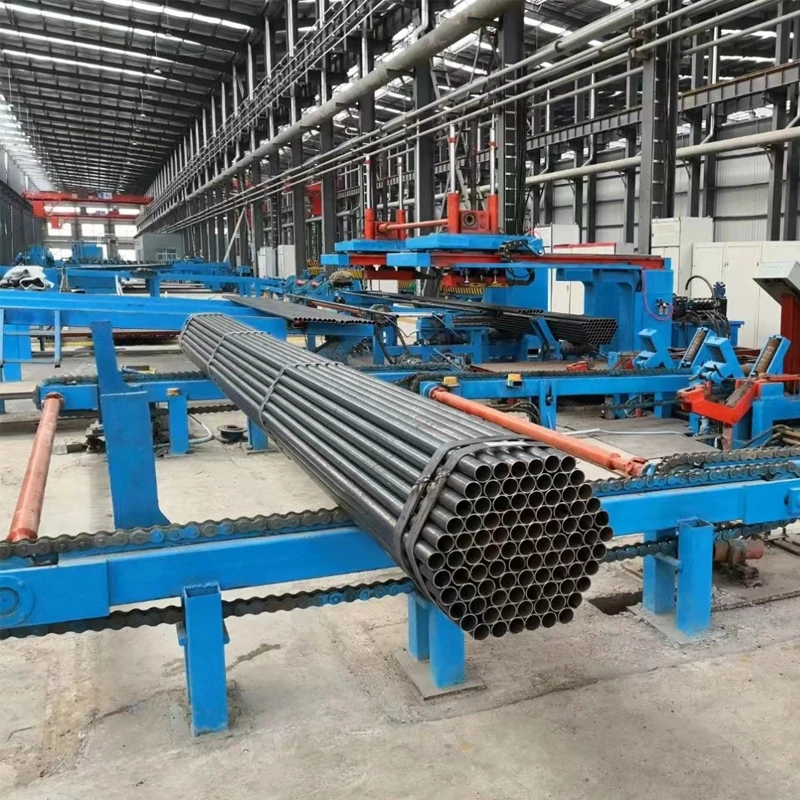Innovative Solutions for Trapezoidal Roll Forming Machinery Efficiency and Design
The Trapezoidal Roll Forming Machine An Essential Tool for Modern Manufacturing
In the realm of metal fabrication, the trapezoidal roll forming machine stands as a cornerstone technology, constantly evolving to meet the demands of diverse industries. This machine is specifically designed to produce trapezoidal section metal sheets, commonly used in roofing, walls, and various structural applications. Its efficiency, precision, and versatility make it an indispensable tool in modern manufacturing.
Understanding the Trapezoidal Profile
Before delving into the workings of the trapezoidal roll forming machine, it is essential to understand the trapezoidal profile itself. This unique shape, characterized by two parallel sides and two non-parallel sides, is not just aesthetically pleasing but also functional. The trapezoidal design provides increased strength and rigidity compared to flat sheets, making it ideal for roof and wall panels subjected to varying loads and environmental conditions.
The Functionality of the Machine
The trapezoidal roll forming machine operates on the principle of continuous bending and shaping. The raw material, typically steel or aluminum coils, is fed into a series of rollers configured in a specific arrangement. Each roller progressively shapes the material, transforming it from a flat sheet into the desired trapezoidal profile.
One of the key advantages of this process is its efficiency. Unlike traditional cutting methods that require multiple steps, roll forming allows for a continuous production flow. This not only speeds up the manufacturing process but also reduces waste, as the material is used more optimally. Most machines can produce long lengths of trapezoidal profiles without the need for joints, enhancing their structural integrity.
Precision and Customization
Precision is critical in any manufacturing process, and the trapezoidal roll forming machine excels in this regard. Advanced computer numerical control (CNC) systems regulate the machine's operation, ensuring that each product meets precise specifications. Operators can easily adjust parameters such as width, height, and angle to create customized profiles for specific applications. This flexibility allows manufacturers to cater to a wide range of client requirements, from small projects to large-scale construction endeavors.
trapezoidal roll forming machine

Benefits Across Industries
The trapezoidal roll forming machine finds extensive application across several industries. In construction, it is commonly used for roofing and siding materials, providing durability and aesthetic appeal. The automotive industry utilizes trapezoidal profiles for various components, taking advantage of their strength-to-weight ratio.
Moreover, the machine's versatility extends to the production of accessories such as gutters, downspouts, and other custom parts. This adaptability is crucial in a competitive market where businesses need to respond quickly to changing demands without sacrificing quality.
Maintenance and Longevity
Investing in a trapezoidal roll forming machine is a strategic decision that can lead to long-term benefits. However, like all machinery, regular maintenance is essential to ensure optimal performance. Routine checks on components such as rollers, motors, and alignment can prevent costly downtime and extend the machine's lifespan. Manufacturers often provide guidelines and support for maintenance routines, ensuring that operators can keep their machines in peak condition.
The Future of Roll Forming Technology
As technological advancements continue to reshape the manufacturing landscape, the trapezoidal roll forming machine is set to evolve further. Innovations in automation, such as robotic assistance and Industry 4.0 integration, promise to enhance operational efficiency and precision. Additionally, sustainable practices are becoming increasingly important, prompting manufacturers to explore eco-friendly materials and processes.
In conclusion, the trapezoidal roll forming machine is more than just a tool; it represents the intersection of engineering, design, and efficiency in the manufacturing process. Its ability to produce high-quality, precision-engineered trapezoidal profiles makes it an invaluable asset across various industries, driving innovation and meeting the evolving needs of modern construction and fabrication. As we look to the future, the continued refinement of this technology will undoubtedly play a crucial role in shaping the landscape of manufacturing.
-
High Frequency Straight Seam Welded Pipe Production Line-BzZhou Xinghua Machinery Equipment Manufacturing Co., LTD.|line pipe steel&welded gas pipeNewsJul.30,2025
-
High Frequency Straight Seam Welded Pipe Production Line-BzZhou Xinghua Machinery Equipment Manufacturing Co., LTD.|High Precision&Automated SolutionsNewsJul.30,2025
-
High Frequency Straight Seam Welded Pipe Production Line - BzZhou Xinghua Machinery Equipment Manufacturing Co., Ltd.NewsJul.30,2025
-
High Frequency Straight Seam Welded Pipe Production Line-BzZhou Xinghua Machinery Equipment Manufacturing Co., LTD.|Precision Welding, High EfficiencyNewsJul.30,2025
-
High Frequency Straight Seam Welded Pipe Production Line|BzZhou Xinghua|Precision Welding&EfficiencyNewsJul.30,2025
-
High Frequency Straight Seam Welded Pipe Production Line - BzZhou Xinghua|Precision Engineering&EfficiencyNewsJul.30,2025


